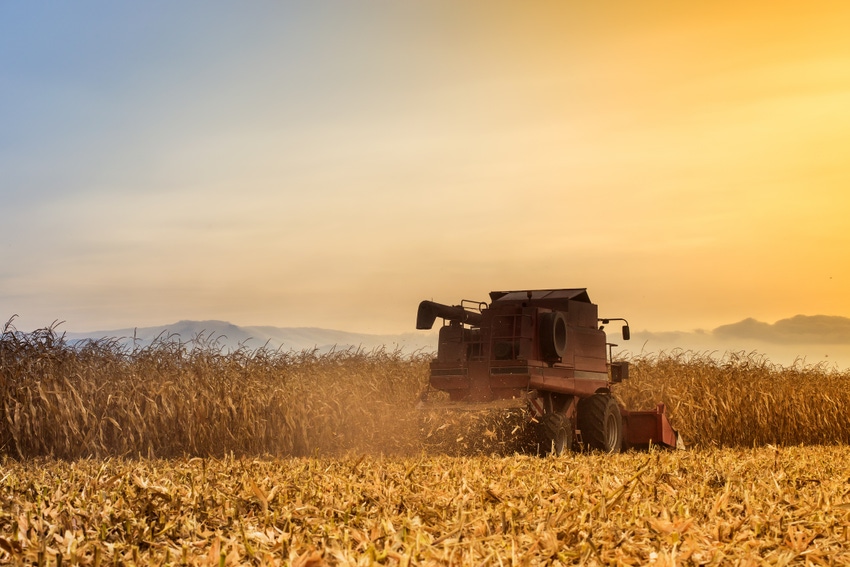
The 2020 corn and soybean harvests continue to wind down, per the latest batch of crop progress data from USDA, out Monday afternoon and covering the week through November 15.
Corn harvest progress reached 95% through Sunday, up from 91% a week ago and one point behind the average trade guess of 96%. Still, 2020 progress is well ahead of 2019’s pace of 73% and moderately faster than the prior five-year average of 87%. This is not much of a surprise, given this year’s crop was planted at a faster clip than usual and enjoyed mostly good growing conditions throughout the season.
A statewide look reveals that just one of the top 18 production states – North Carolina – is marked at 100% complete. Seven more states have made progress between 97% and 99%, meantime. Ohio still has the farthest to go, with 79% of the harvest now complete.
Soybean harvest is now at 96% complete, matching analyst expectations and moving up from 92% a week ago. This year’s harvest is moving along more quickly than both 2019’s pace of 89% as well as the prior five-year average of 93%.
USDA marked five of the top 18 production states as 100% complete this past week, including Louisiana, Minnesota, Nebraska, North Dakota and South Dakota. North Carolina has the most ground yet to cover, with 53% of its soybean crop harvested.
The 2020/21 winter wheat crop is nearly completely planted, meantime, with 96% progress through Sunday. That’s up from 93% last week and remains a bit ahead of the prior five-year average of 94%. And 85% of the crop is now emerged, versus the prior five-year average of 84%.
As expected, USDA noted that crop quality improved by a point this week, with 46% now rated in good-to-excellent condition. Another 36% is rated fair (down two points from last week), with the remaining 18% rated poor or very poor (up one point from a week ago). State-by-state ratings vary widely – ranging from 95% rated in good-to-excellent condition in California down to 25% in Colorado.
Click here for updates on additional crops such as sorghum, cotton and peanuts, plus topsoil moisture conditions, days suitable for fieldwork and more.
About the Author(s)
You May Also Like






